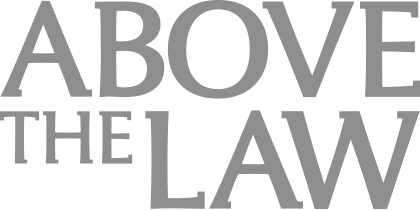Translating Between Contracts And Code: Bridging The Gap Between Legal And Tech
Technology can be a powerful ally for legal professionals.
 In today’s fast-paced, tech-driven world, the intersection of law and technology is more relevant than ever. As legal professionals, we often find ourselves collaborating with developers and tech teams to build innovative products while ensuring compliance and minimizing risks. In a recent conversation I had with Laura Jeffords Greenberg, senior director of legal at Worksome, we delved into the unique challenges and opportunities that arise when lawyers and developers work together. Laura shared her journey from a sports lawyer to a tech-savvy legal expert, offering invaluable insights into how lawyers can effectively navigate this evolving landscape.
In today’s fast-paced, tech-driven world, the intersection of law and technology is more relevant than ever. As legal professionals, we often find ourselves collaborating with developers and tech teams to build innovative products while ensuring compliance and minimizing risks. In a recent conversation I had with Laura Jeffords Greenberg, senior director of legal at Worksome, we delved into the unique challenges and opportunities that arise when lawyers and developers work together. Laura shared her journey from a sports lawyer to a tech-savvy legal expert, offering invaluable insights into how lawyers can effectively navigate this evolving landscape.
Here are some key takeaways from our discussion that highlight strategies for fostering better collaboration between legal and tech teams.
1. Building Relationships With Developers: The Foundation For Effective Collaboration
Laura emphasizes the importance of building strong relationships with developers as a cornerstone for successful collaboration. She recalls her early days at a tech startup, where she shared an office with the CTO and made a concerted effort to understand the technology they were developing. This proximity allowed her to learn the language of developers, gain insights into their processes, and build trust.
To replicate this, Laura suggests that legal professionals:
- Show Genuine Interest. Take the time to understand what the developers are working on and why it’s important. Ask them to explain their projects and processes in simple terms and show enthusiasm about their work.
- Learn Basic Coding. Even a rudimentary understanding of coding can go a long way in bridging the gap between legal and tech. It demonstrates a willingness to learn and understand the developers’ world, fostering mutual respect and collaboration.
- Use Clear And Concise Communication. Restate what you’ve heard in your own words to ensure understanding and to confirm that you’re on the same page. This technique helps avoid misunderstandings and shows that you are actively listening.
2. The Power Of Asynchronous Communication
In our discussion, Laura highlighted the effectiveness of asynchronous communication, particularly for distributed teams or teams with varying schedules. Asynchronous communication allows team members to share information and updates without requiring an immediate response, thereby respecting everyone’s time and work style.
Key practices for asynchronous communication include:
- Documenting Everything. Encourage a culture of documentation where all decisions, processes, and updates are recorded in a central repository. This not only helps in maintaining clarity but also ensures that new team members can easily onboard and understand the context of past decisions.
- Setting Clear Expectations. Let your team know your availability and preferred communication channels. For example, Laura blocks out specific times for deep work and clearly communicates when she will be available to respond to questions.
- Using Technology To Your Advantage. Tools like Slack, Microsoft Teams, and other collaboration platforms can facilitate asynchronous communication. Integrating AI tools to automate repetitive tasks and manage FAQs can further enhance efficiency.
3. Leveraging Technology For Legal Efficiency
Laura’s experience shows that technology can be a powerful ally for legal professionals. From using AI to automate routine tasks to adopting tools that improve contract management, technology can help lawyers focus on higher-value work.
Some practical ways to leverage technology in your legal practice include:
- Automating Routine Tasks. Use platforms like DocuSign for automating document workflows, enabling self-service for frequently used contracts, and integrating AI for answering repetitive queries.
- Adopting AI Tools. AI can help analyze large volumes of data, provide insights, and predict outcomes, making it an essential tool for modern legal teams. Laura mentions tools like Legal OS, which uses AI to answer complex policy-related questions, saving time and increasing accuracy.
- Encouraging Continuous Learning. Stay updated with the latest technological advancements. Regularly explore new tools and platforms that can improve your workflow and keep you ahead of the curve.
4. Setting Boundaries And Managing Expectations
A crucial aspect of thriving in a tech environment is setting clear boundaries and managing expectations. Laura stresses the importance of maintaining a healthy work-life balance and ensuring that you are not constantly in reactive mode.
To achieve this, consider the following strategies:
- Define Your Working Hours. Make sure your team and colleagues are aware of your working hours and respect them. Use tools like calendar blockers to set aside time for focused work.
- Communicate Clearly. Be upfront about your availability and the best ways to reach you. Encourage your team to use the appropriate channels for different types of queries.
- Prioritize Your Tasks. Focus on high-priority tasks and learn to delegate or defer less critical ones. This helps in managing your time better and reduces stress.
5. The Importance Of Understanding Your Product
One of Laura’s standout pieces of advice is for lawyers to deeply understand the products their teams are building. She stresses that using the product or at least having a basic understanding of its functionality can significantly improve the quality of legal advice provided.
Here’s how you can apply this:
- Get Hands-On. Use the products your team is developing to understand its features, limitations, and potential legal implications. This hands-on experience is invaluable in providing relevant and practical legal advice.
- Stay Curious. Continuously ask questions about new developments, features, or technologies your team is working on. This not only keeps you informed but also shows your team that you are invested in their work.
- Engage With Other Departments. Regularly interact with other departments such as product, marketing, and sales to get a holistic view of how your product fits into the market and any legal considerations that may arise.
Final Thoughts
Navigating the intersection of law and technology requires a unique blend of legal expertise, technological understanding, and excellent communication skills. By building strong relationships with developers, leveraging asynchronous communication, embracing technology, and setting clear boundaries, legal professionals can thrive in a tech-driven environment. Laura Jeffords Greenberg’s insights provide a valuable roadmap for lawyers looking to enhance their collaboration with tech teams and drive innovation within their organizations.
For a deeper dive into these strategies and more, tune into the full episode with Laura. Whether you’re a legal professional in a tech company or just curious about the future of law and technology, this episode is packed with practical advice and inspiration to help you succeed.
 Olga V. Mack is a Fellow at CodeX, The Stanford Center for Legal Informatics, and a Generative AI Editor at law.MIT. Olga embraces legal innovation and had dedicated her career to improving and shaping the future of law. She is convinced that the legal profession will emerge even stronger, more resilient, and more inclusive than before by embracing technology. Olga is also an award-winning general counsel, operations professional, startup advisor, public speaker, adjunct professor, and entrepreneur. She authored Get on Board: Earning Your Ticket to a Corporate Board Seat, Fundamentals of Smart Contract Security, and Blockchain Value: Transforming Business Models, Society, and Communities. She is working on three books: Visual IQ for Lawyers (ABA 2024), The Rise of Product Lawyers: An Analytical Framework to Systematically Advise Your Clients Throughout the Product Lifecycle (Globe Law and Business 2024), and Legal Operations in the Age of AI and Data (Globe Law and Business 2024). You can follow Olga on LinkedIn and Twitter @olgavmack.
Olga V. Mack is a Fellow at CodeX, The Stanford Center for Legal Informatics, and a Generative AI Editor at law.MIT. Olga embraces legal innovation and had dedicated her career to improving and shaping the future of law. She is convinced that the legal profession will emerge even stronger, more resilient, and more inclusive than before by embracing technology. Olga is also an award-winning general counsel, operations professional, startup advisor, public speaker, adjunct professor, and entrepreneur. She authored Get on Board: Earning Your Ticket to a Corporate Board Seat, Fundamentals of Smart Contract Security, and Blockchain Value: Transforming Business Models, Society, and Communities. She is working on three books: Visual IQ for Lawyers (ABA 2024), The Rise of Product Lawyers: An Analytical Framework to Systematically Advise Your Clients Throughout the Product Lifecycle (Globe Law and Business 2024), and Legal Operations in the Age of AI and Data (Globe Law and Business 2024). You can follow Olga on LinkedIn and Twitter @olgavmack.







